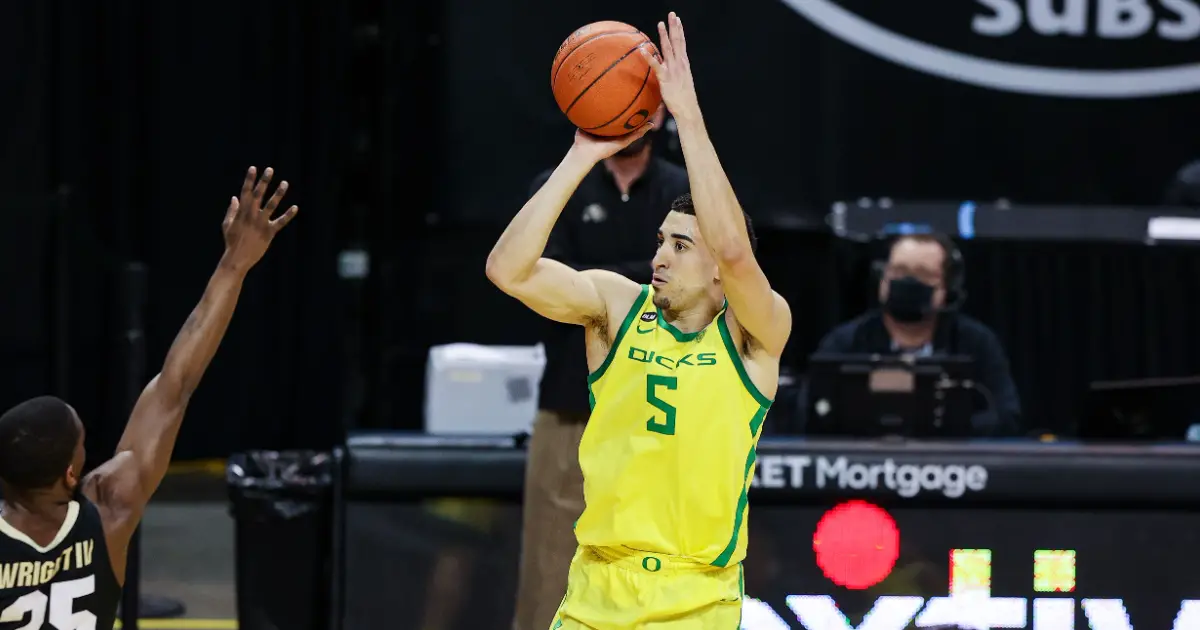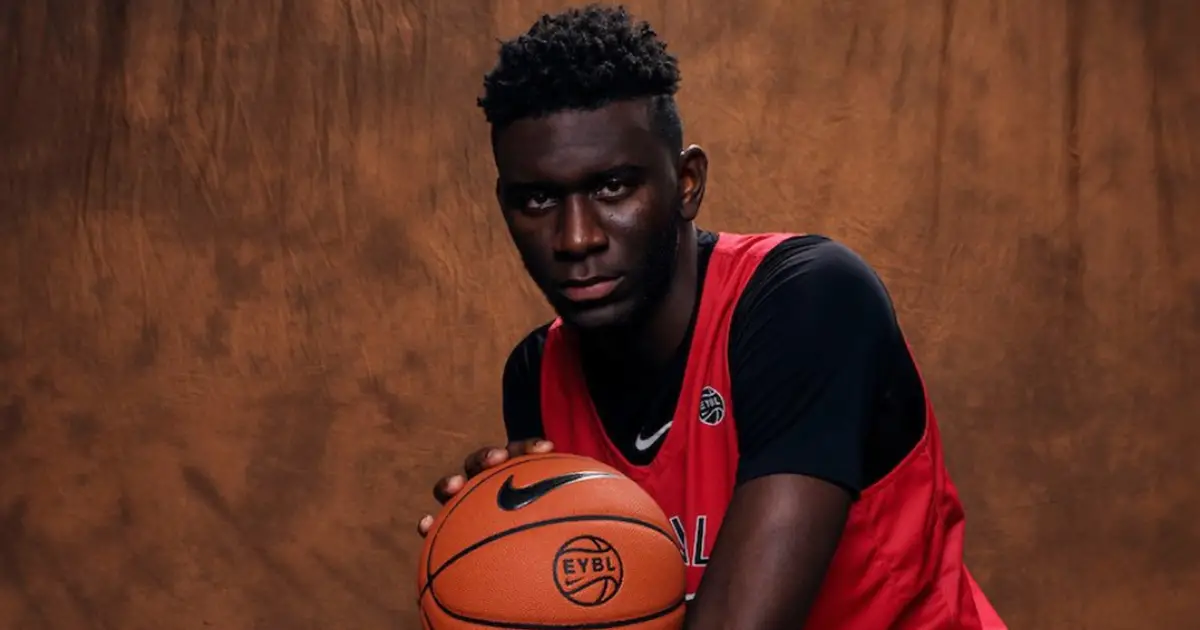Dana Altman is a fantastic basketball coach. He builds great rosters with solid length, has decent game plans in most games, and gets his teams to play hard night-in and night-out. Every coach has their tendencies though, and unfortunately for the Ducks in the Sweet Sixteen, Altman has the tendency to play freshmen less.
Of course there are exceptions to the rule: Bol Bol played in only nine games due to injury, but averaged nearly 30 minutes per game. Bol did look to be a transcendent talent, however. The 2017/2018 team had a bunch of freshmen play significant minutes, but they had very little returning production from their Final Four run the year prior. In 2014/2015 Jordan Bell played 23 minutes per game, but he was one of only three players above 6’7″ on the roster.
Altman’s unspoken rule of age can be broken, which begs the question: why did Franck Kepnang play only 10 minutes against USC?
When N’Faly Dante went down for the year after playing only six games, Kepnang had been enrolled for less than a week. Altman had from that point (December 17th) until March 28th to work the true freshman into the lineup. As USC did anything they wanted on offense, and Oregon didn’t have the size to challenge them defensively, Kepnang rode the bench.
Chris Duarte and Eugene Omoruyi scored 49 of Oregon’s 68 points, but the other three starters scored only 11 points. Off the bench, the Ducks were ineffective to say the least. Amauri Hardy was yanked off of the floor after only three minutes, he finished the game with a rebound and no other stats. Chandler Lawson played for eight minutes and finished the game with two rebounds and a foul. Jalen Terry, once expected to be a major component this season, played a single minute.

Oregon needed an inside presence to take pressure off of Chris Duarte in the Sweet Sixteen.
The only bench player to have any impact on the game was Kepnang. The true freshman played much of the back half of the second half and logged eight points and a rebound. But one play in particular signified why he should’ve been in the game for more than the 10 minutes he logged. It was a post up on Evan Mobley that resulted in a layup.
Why was a late game post up resulting in exactly two points significant? Mobley was clearly a concern for Oregon. Usually teams break a zone by either shooting lights out from the perimeter, or by getting inside and bullying the opposing big men. On the aforementioned basket by Kepnang, Mobley looked weak. Kepnang backed him in to the paint, got him to overcommit to his inside shoulder and spun around for an easy basket. It was the type of offense that Oregon lacked in both blowout losses to USC this year.
Detractors of Kepnang will point to some defensive errors as a reason to not let him play. The issue with that rhetoric is that Oregon had the 103rd rated defense this season, so playing a young player who could provide some rim protection (Kepnang averaged 1.1 blocks per game in only 8.5 minutes per game this season) could do very little to make their defense worse. The second issue with not playing someone because they struggle situationally is that the best way to improve at basketball is to play basketball.
Overall, Altman made a bad choice this season. He chose to let his only healthy player above 6’8″ sit on the bench, instead of letting him get valuable playing time and conditioning that could come up big late in the season. The good news for Oregon is that both their great coach and their good young player will be back for next season.
Ryan Robertson
Yuma, Arizona
Top Photo From Twitter
Related Articles:
Oregon Enters Playoffs Better Off Than Last Year
Will The Coaching Carousel Kill Oregon's CFP Chances?
The Playoff Formula Hasn't Changed
Oregon Aims to Bury Dawgs, Punch Playoff Ticket in Rivalry Clash
Huskies Are the New Beavers, Stay In Your Lane Kiffin, and the Civil Apple Cup War
Oregon Football: The X-Factor Vs. Washington
Ryan Robertson is a defense contractor for the United States Marine Corps. A lifelong Duck fan from Grants Pass, he joined the Army out of high school. After four years as an Intelligence Analyst he decided it was time to further his education and pay more attention to his Ducks. One of Ryan’s first memories is of watching the Ducks, led by Joey Harrington, beating up on the Utah Utes in 2001. His grandfather ran track at Oregon in the ‘50s. He loves the Ducks, and has a passionate interest in reading every scrap of analysis centered around the football team.

